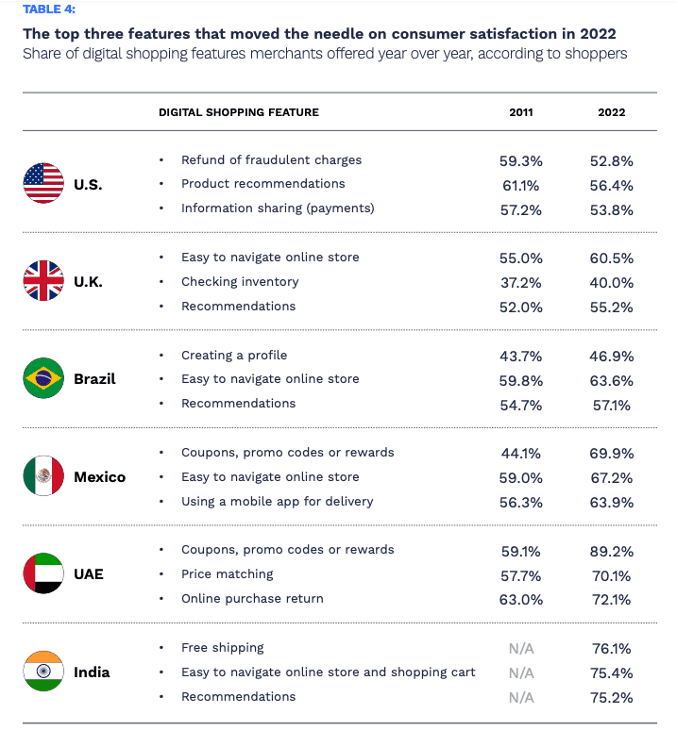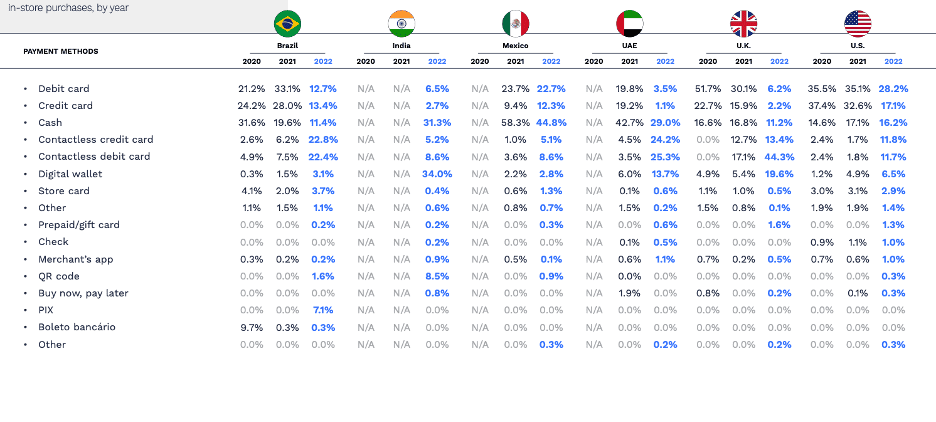More Consumers Using Smartphones to Create Their Own Personalized Retail Experience

Shoppers are not only blending digital features and payment methods to personalize their in-store experiences, they’re also gravitating to retailers that cater to this behavior.
The return to physical stores hasn’t left behind eCommerce features, but rather made them portable in the form of smartphones that effectively allow consumers to use eCommerce features while roaming store aisles, and in turn, create their own personalized shopping experience.
As is found in the third annual Global Digital Shopping Index, a PYMNTS and CyberSource collaboration based on surveys of over 30,000 consumers and 3,000 merchants in six nations, features and payments choice undergird the trend as mobile and physical merge more.
The study notes that “consumer satisfaction is higher when merchants offer digital shopping features that can add certainty to their shopping and payments experiences. Satisfaction also rises when merchants make the full range of their digital feature offerings known to local shoppers.”

Looking at the digital features that matter most to in-store shoppers, we find variation between countries studied, as well as common threads showing that these preferences cross borders.
An example of this is found in a comparison between the addition or removal of digital shopping features in the United Arab Emirates (UAE) and the U.S.
For example, in 2022 73.1% of UAE retailers allowed shoppers to access or receive product recommendations on smartphones — six percentage points higher than in 2021 — while in the U.S., retailers ratcheted back recommendations in 2022 by 4.7 percentage points.
This caused the GDSI score of U.S. merchants to drop from 99 to 95 between 2021 and 2022, meaning shoppers were 4.3% less satisfied with shopping journeys than a year before.
Conversely, “in-store navigation apps are especially important for U.S. merchants. Brick-and-mortar shoppers in the U.S. who used in-store navigation apps were 42% more satisfied with their merchants’ in-store digital shopping features than consumers who did not.”
That satisfaction or lack thereof is what drives consumers from one retailer to another.
Payments Choice and Shopper Satisfaction
Another aspect of the blended mobile and in-store shopping experiences vital to customer satisfaction and merchant selection is payments choice. This factor has steadily risen across the shopping spectrum, and with smartphone-equipped shoppers now back in stores, it’s decisive.
The study notes that “credit and debit cards are still the most commonly used payment methods globally, but digital wallets are rapidly gaining traction, especially in the U.K. and the UAE. That said, consumers typically fund digital wallets through a credit or debit card, so they can sometimes be interchangeable.”
A good illustration of this is found in the rise of digital wallets in the U.K. where 20% of brick-and-mortar shoppers used a digital wallet to pay for their most recent in-store purchases. That’s over three times the number who did so in 2021. Meanwhile, 14% of brick-and-mortar shoppers in the UAE paid for their most recent purchases via digital wallet this year, more than twice the share who did the same last year.

While digital wallets are rapidly gaining favor with shoppers who are using them more in 2022 than a year earlier, contactless credit and debit cards turned in double-digit gains in four of the six nations studied.
Contactless made the biggest gains in 2022 in nations that are digitizing more rapidly and purposefully now, including Brazil and the UAE.
Contactless debit payments delivered an especially strong 2022 increase in the U.K, experiencing a 27.2 percentage point gain year-over-year.
Get the study: The 2023 Global Digital Shopping Index
